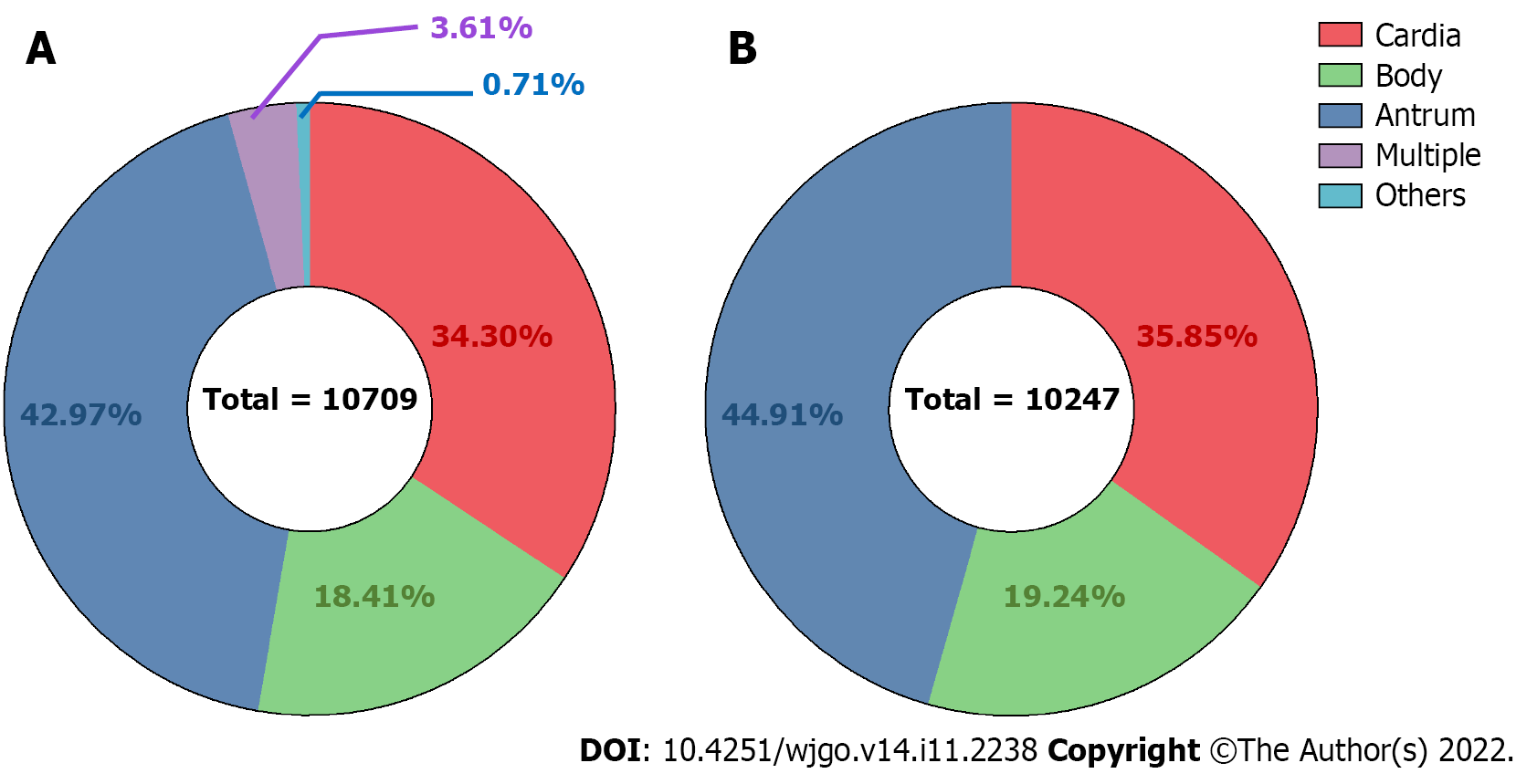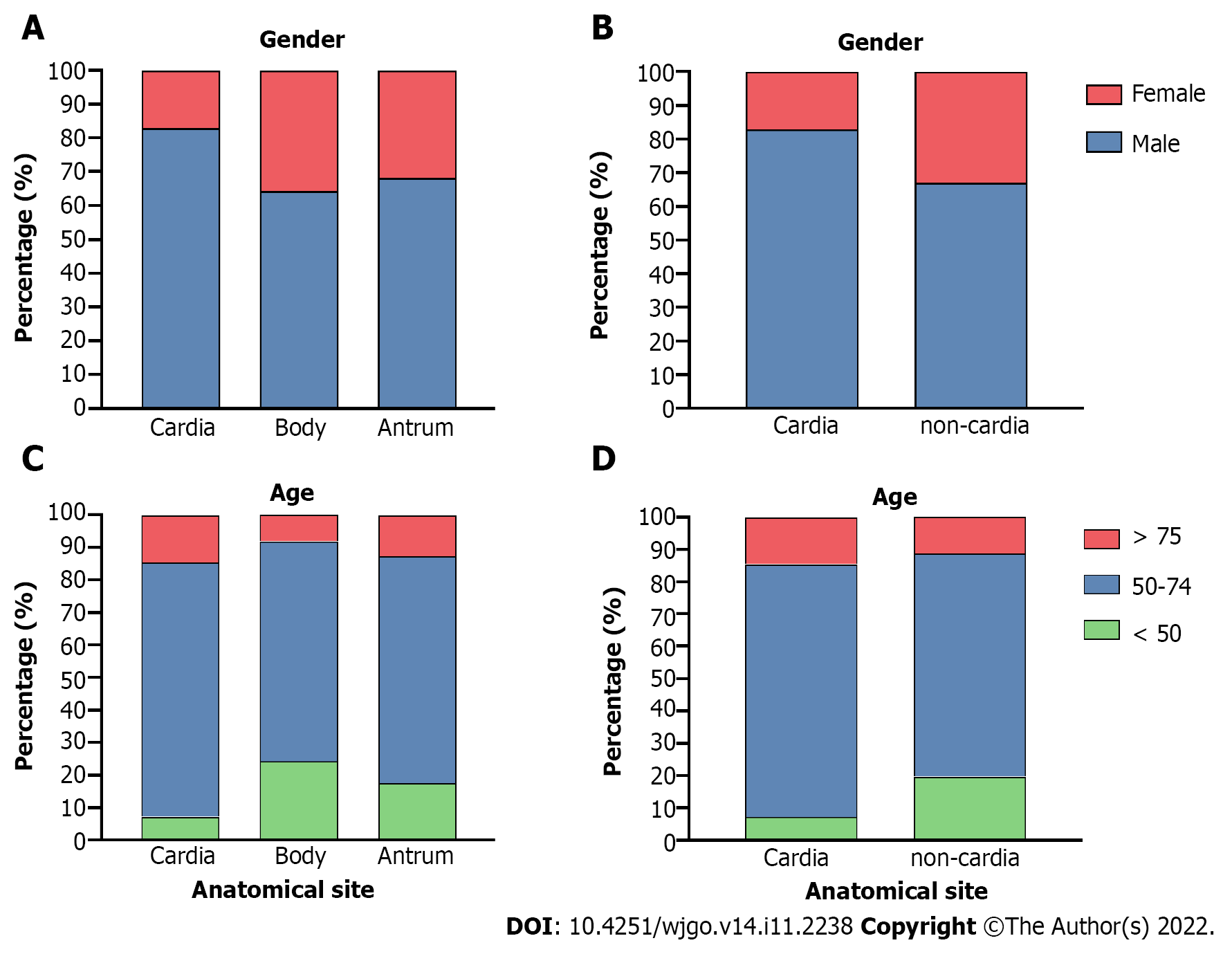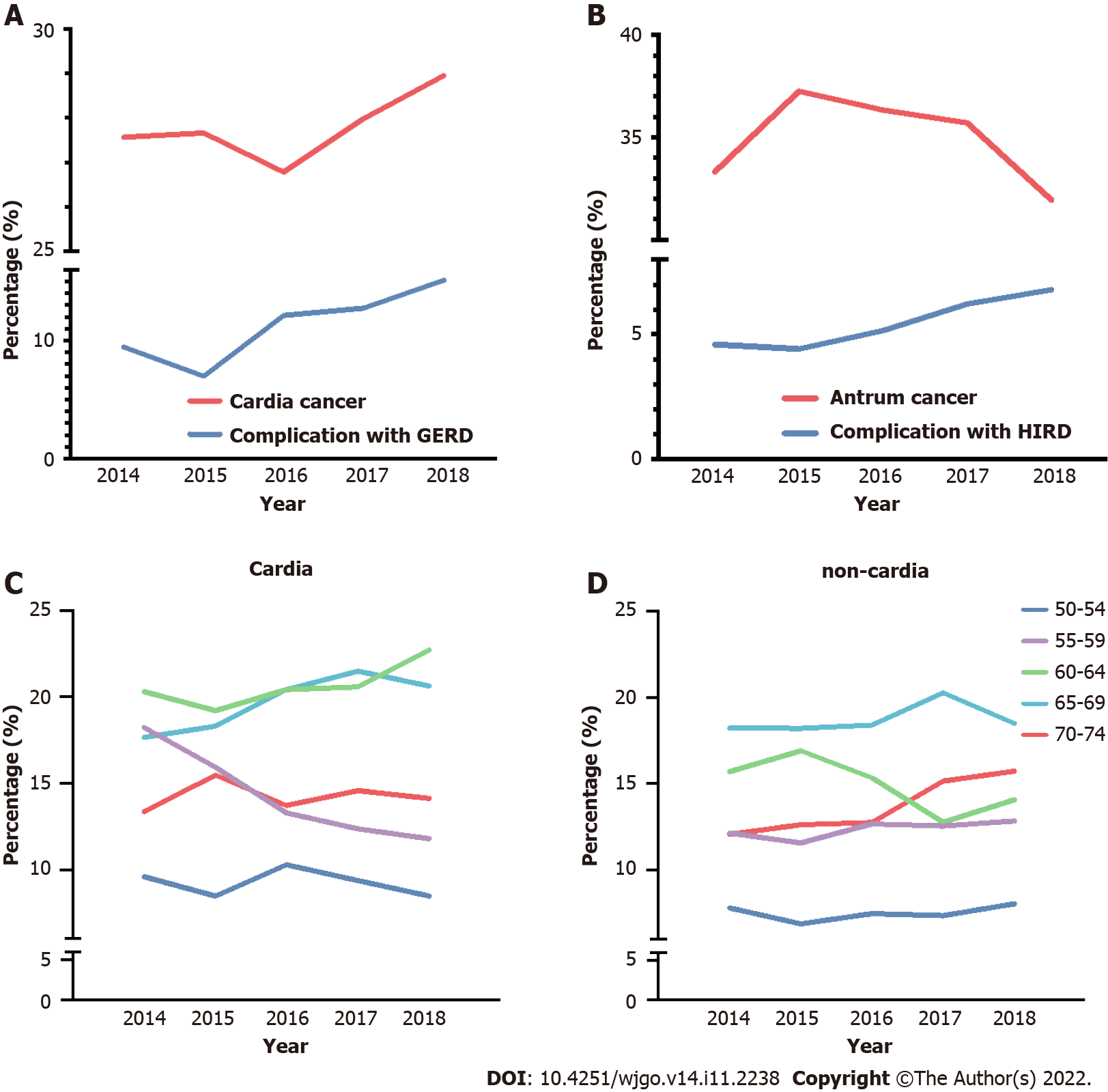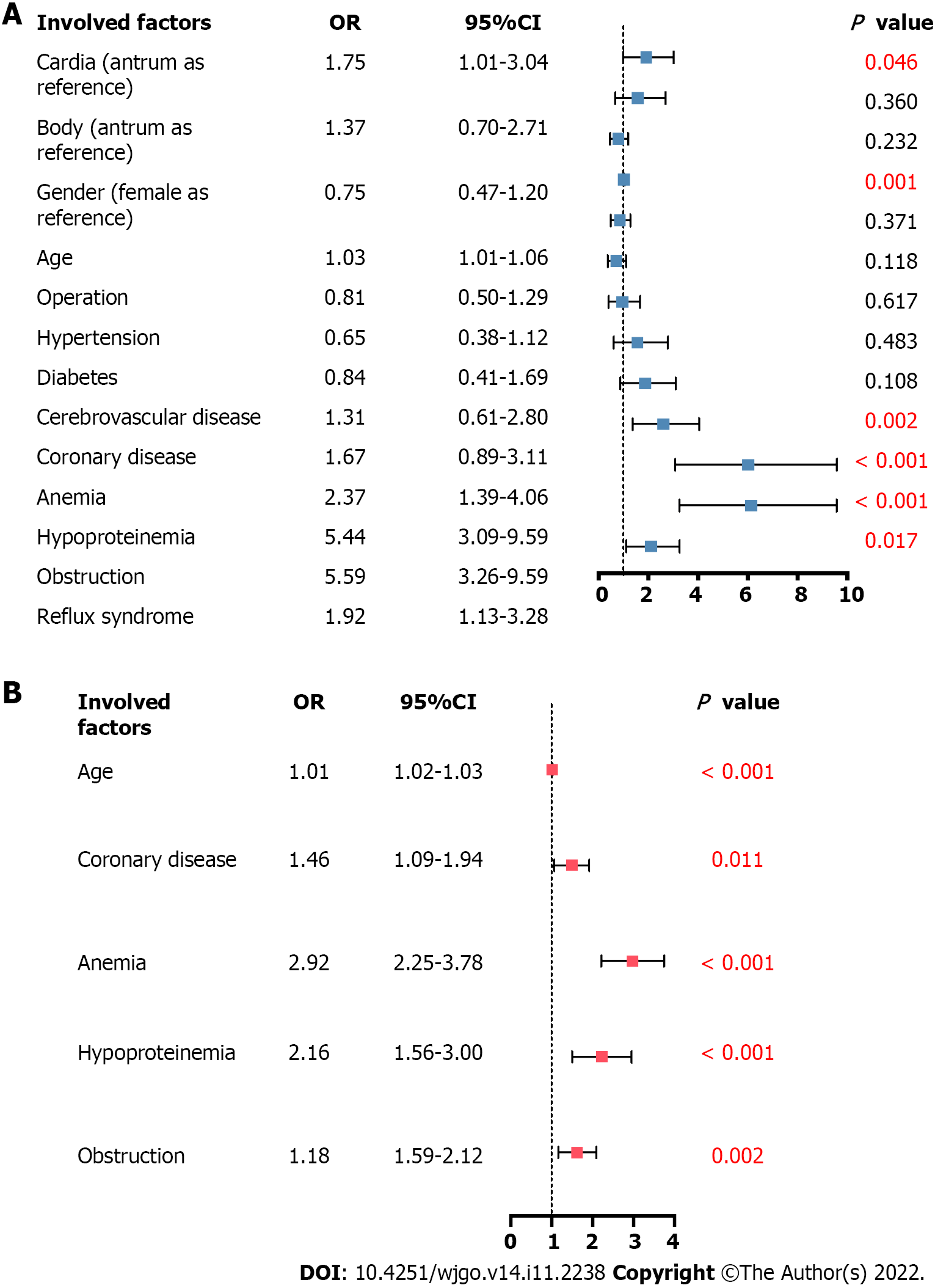Copyright
©The Author(s) 2022.
World J Gastrointest Oncol. Nov 15, 2022; 14(11): 2238-2252
Published online Nov 15, 2022. doi: 10.4251/wjgo.v14.i11.2238
Published online Nov 15, 2022. doi: 10.4251/wjgo.v14.i11.2238
Figure 1 Anatomical distribution of gastric cancer among the study population.
A: All involved patients; B: Gastric cardia, body, and antrum.
Figure 2 Sex and age distribution among the different anatomical subsites of gastric cancer.
A: Sex distribution for the three anatomical subsites; B: Sex distribution for the cardia and non-cardia cases; C: Age distribution for the three anatomical subsites; D: Age distribution for the cardia and non-cardia cancer cases.
Figure 3 Alternation trends in combined diagnosis, age, and constituent ratio according to the anatomical subsite of gastric cancer during the study period.
A: Percentage change in cardia cancer along with the complication of gastroesophageal reflux disease; B: Percentage change in gastric antrum cancer along with the complication of Helicoibacter pylori (H. pylori) infection-related diseases; C: Age changes among patients with cardia cancer aged 50-74 years, after stratification of patients into five age subgroups; D: Age changes among patients with non-cardia cancer aged 50-74 years, after stratification into five age subgroups. GERD: Gastroesophageal reflux disease; HIRD: H. pylori infection-related diseases.
Figure 4 Multivariable regression analysis on the relationship between hospitalization clinical outcomes and risk factors, including anatomical subsite.
A: Validation of risk factors on in-hospital death through Poisson regression; B: Validation of risk factors on short-term postoperative complications through logistic regression.
- Citation: Qu RZ, Ma YP, Bao XY, Tao LY, Zhou X, Lu SY, Zhang Y, Wang BY, Li F, Tuo L, Zhang ZP, Fu W. Features of gastric cancer by anatomic subsite in northern China: A multi-center Health Science Report database study. World J Gastrointest Oncol 2022; 14(11): 2238-2252
- URL: https://www.wjgnet.com/1948-5204/full/v14/i11/2238.htm
- DOI: https://dx.doi.org/10.4251/wjgo.v14.i11.2238












